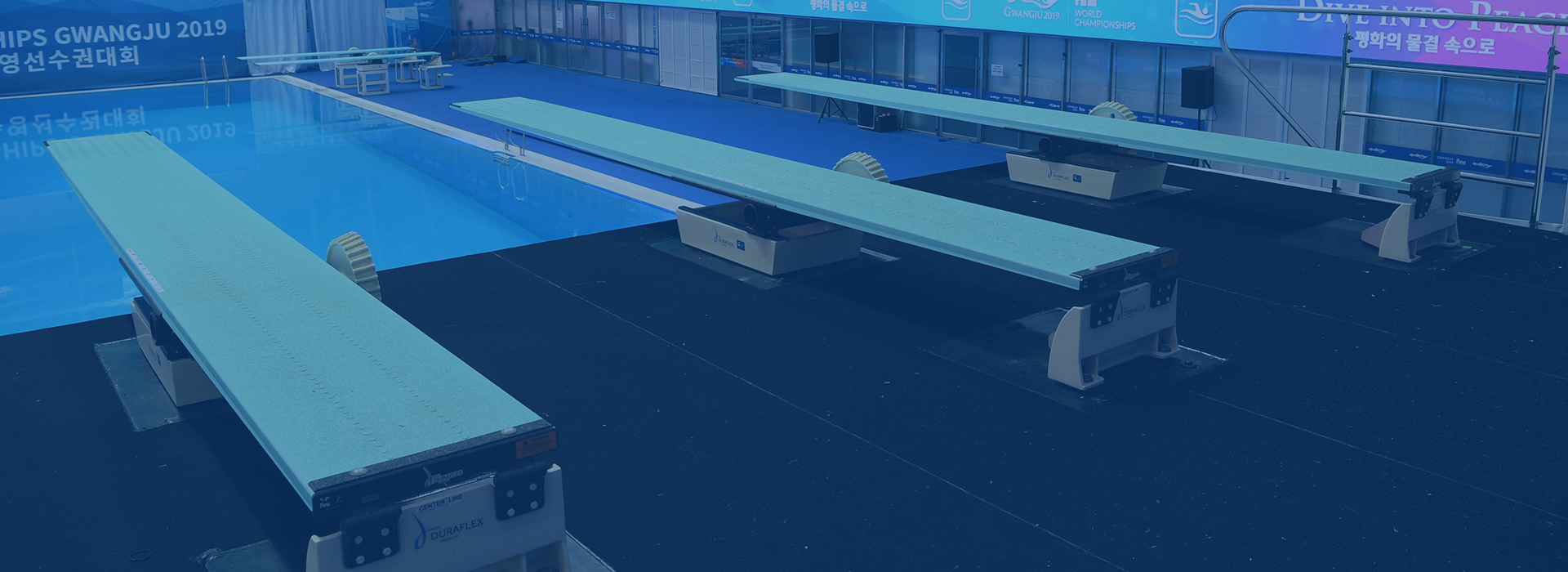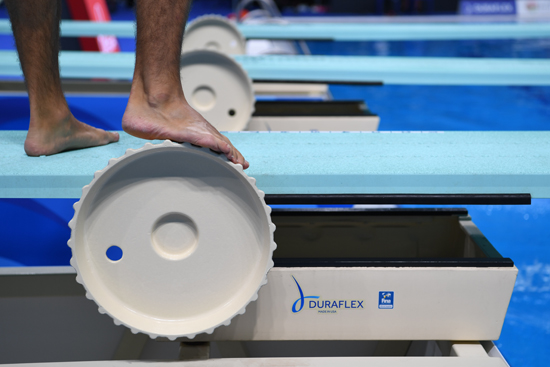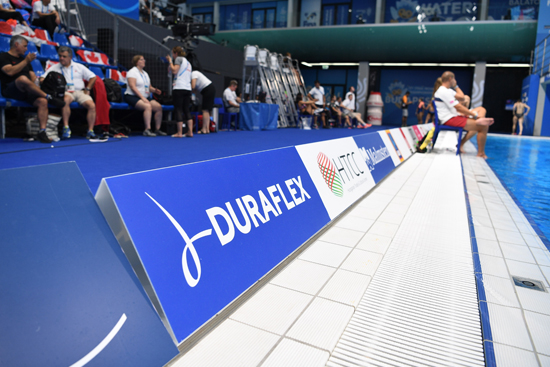
Our Boards, Our Champions
Throwing yourself from high rocks and naturally occurring platforms into cold, clear water was as attractive to prehistoric man as it is to the multitudes of enthusiasts today. The first historical record of diving dates back to 480 BC and the Tomba del Tuffatore (Tomb of the Diver). The tomb, which was discovered in Paestum in southern Italy, includes a painting depicting a man diving gracefully into water from a high platform and is believed to signify the passage of life to death.
The sport as it is known today can be traced back to Germany and Sweden in the 18th and 19th centuries.
Gymnasts would work on their tumbling routines into water during the summer months. In Germany gymnasts would use river bridges from which to perform their skills, while in Sweden wooden scaffolding was built at lakes and on beaches for the same purpose. Such displays proved hugely popular with the public.
In the late 19th century a group of Swedes travelled to Great Britain and performed their acrobatic dives in front of a large crowd, leading to the formation of the Amateur Diving Association in 1901. Three years later, diving was included on the Olympic program at the St Louis 1904 Games. In 1960 at the Rome Olympics, the first Duraflex springboard was used. Since then every Olympic Games has recognized this first class product as the only choice of springboard champions.


Diving today
The popularity of diving has increased significantly and more than 40 countries now participate at international level.
In addition to the Olympic Games, diving is also part of the International Aquatics Federation (FINA) World Championships, which are held every two years and the FINA Diving World Series held every year. The sport was included on the program for the first world championships in Belgrade in 1973. Initially only 3m springboard and 10m platform events were contested, with the 1m springboard event added in 1991 and synchronised diving included from 1998.
Fina also oversees the Diving World Cup, held every two years, the Junior World Championships, and the Grand Prix series.
The USA dominated diving for most of the 20th century but China is now the undoubted superpower. ZHOU Jihong won China’s first Olympic diving gold medal at the Los Angeles 1984 Games. At the Beijing 2008 Olympic Games, China won seven gold medals from eight events and at the London 2012 Games, China won six of the eight gold medals on offer.
Diving in the Olympics
Diving was still a relatively new sport on the international scene when it was first included on the Olympic Games program at the St Louis 1904 Games – the third of the modern era. The men’s platform and plunge-for-distance were the two events contested at those Games.
Men’s springboard was added to the Olympic diving program in London in 1908, women’s platform in Stockholm (1912) and women’s springboard in Antwerp (1920). The addition of synchronised diving for the Sydney 2000 Games is the only change made since the Antwerp 1920 Games.
American diver Greg LOUGANIS (USA) is one of the sport’s legendary figures, having won both the men’s 3m springboard and 10m platform gold medals at the Los Angeles 1984 Games and at the Seoul 1988 Games. He is the only male diver to win a clean sweep of individual gold medals at two successive Olympic Games. He also won a silver medal in the 10m platform at the Montreal 1976 Games.
The emergence of china as a major force in diving had already began before louganis retired, and that trend has continued.
China is particularly dominant in the women’s events, winning all four gold medals on offer at the past two Olympic Games. At London 2012, CHEN Ruolin (CHN) retained the 10m platform title she won in Beijing four years earlier, and alongside WANG Hao (CHN), she also won the synchronised 10m platform title, which she had claimed in Beijing while partnering WANG Xin (CHN).
WU Minxia (CHN) has won the synchronised 3m springboard event at the past three Olympic Games. She also claimed the 3m individual springboard title at the London 2012 Games.
China has won 19 of the 24 gold medals available across the men’s and women’s diving events at the three most recent Olympic Games.


Future of the sport
What will the next generation of duraflex boards and stands look like?
The answer to this question has been and continues to be a major endeavor of our company. We have an engineering staff who is devoted to the daily task of refining and improving our boards and stands. Duraflex also works with a team of experts in Human Performance and Biomechanics, And specialist engineers in materials and manufacturing. The Duraflex leadership team is composed of former divers, coaches and factory administrators who have spent a lifetime of devotion to the sport of Diving.
What will the future look like? It will be astonishing to see what the world’s best athletes will be doing on duraflex boards and stands! We can’t wait to show you!

